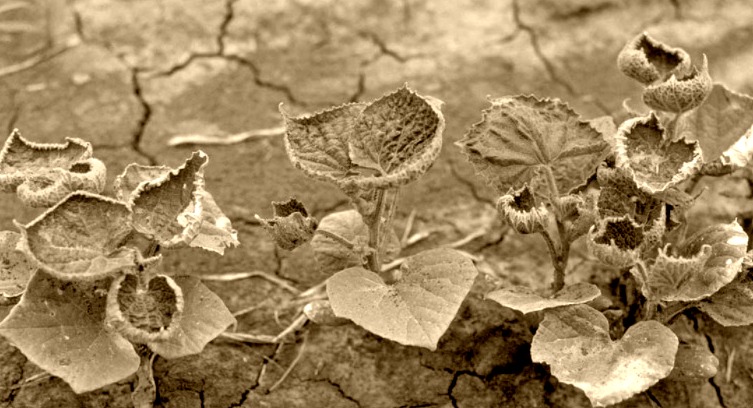 Brandon Turbeville
Brandon TurbevilleNatural Blaze
June 21, 2018
Troubling amounts of off-target injury reports are coming from across the South and Midwest of the United States from 2, 4-D dicamba spraying. The new reports are forcing weed scientists and regulators to urge farmers that are going to utilize dicamba to stay “on label.”
According to Texas A&M Extension Cotton Specialist Gaylon Morgan, cotton growers in Texas are seeing more dicamba damage to cotton than would otherwise be considered normal during this time of year. Larry Steckel, University of Tennessee Extension weed scientist has also seen a number of reports of injury in the Western part of the state and at least one dicamba injury report.
Dicamba injury complaints have been filed in Oklahoma, Missouri, Iowa, Indiana, and Arkansas according to the American Association of Pesticide Control Officers, primarily on non-soybean plants including vegetables, fruits, ornamentals, and trees.
Morgan states that applicator confusion about spray buffers is probably the most common reason of the damage in Texas. "If there is susceptible crop downwind from your field, you cannot spray when the wind is blowing in that direction -- there are no buffers that allow you to spray," he said. "I think that is the single biggest misunderstanding out there."
Steckel says recent rainy weather has forced Tennessee farmers to utilize a tinier window of time when deploying dicamba. "There simply being no good day to spray has been the biggest problem here," he said.
As The Progressive Farmer writes,
Keeping dicamba and 2,4-D in your field is more critical than ever as postemergence spraying picks up in Xtend soybeans and continues in Enlist cotton in the weeks ahead, Morgan warned.
"With this technology, whether Enlist or Xtend, there is a learning curve with how to keep things on target," he said. "Individuals who have done it are learning that you have to follow every single step on that label to keep it on target."
Both Steckel and Morgan have some recommendations as to what can be done to prevent off-target dicamba injury.
As Emily Unglesbee writes,
1. KNOW THE SYMPTOMS
Soybeans are extremely sensitive to dicamba, and cotton is extremely sensitive to 2,4-D, but those aren't the only potential victims of herbicide drift. Fruits such as grapes and tomato are also very sensitive to these herbicides, as well as many vegetables, ornamentals, trees and other plants.
For the most sensitive crops, it only takes tiny amounts of the herbicide to cause visible injury. For example, just 10 to 16 drops from an eyedropper of dicamba, dispersed over an acre, could cause visible injury symptoms on crops such as soybeans and grapes, according to research from the University of Georgia.
A young soybean plant with dicamba injury will have distinctive cupped and curled leaves on new growth. In reproductive stages later in the season, soybeans tend to show damage with curled or aborted pods, and dead flowers.
A cotton plant exposed to 2,4-D will show injury called "strapping," where the leaves become long and narrow, and the leaf veins run parallel to each other, Morgan said.
"It is in the new growth that the symptoms become very pronounced," he explained. "How long the symptoms are observed depends on the rate of herbicide. If it is a very, very low rate, the symptoms may be present for a couple of nodes ... then normal-shaped leaves begin to appear. If the rate is higher, the symptoms may continue to be observed season-long on the new growth."
The University of Arkansas has compiled photos to help identify herbicide injury here: https://plants.uaex.edu/….
2. IDENTIFY THE SOURCE AND REPORT THE PROBLEM
Start by figuring out where the herbicide came from. Don't forget to include yourself in the list of culprits, Morgan noted. Tank contamination or applicators in the wrong fields are not uncommon mistakes this time of year.
If you suspect a neighbor, inform them immediately, so they know not to spray that herbicide again under the same conditions, Steckel said. While young soybean and cotton plants can outgrow early season herbicide injury without yield loss, a second drift incident can do much more serious damage.
Enlist and Xtend cotton growers have the option to make additional passes with glufosinate rather than dicamba or 2,4-D, Steckel added. See details on this option here: http://news.utcrops.com/….
Whenever possible, try to work out any damage concerns and compensation with your neighbor first, before moving on to other legal action, Morgan recommended.
3. MAKE SOME CALLS
If fence-row talks break down, it may be necessary to get more professional help. Contact your state Extension agent for a second opinion, Morgan said. And you can file a complaint with your state department of agriculture, most of which are on alert for this type of injury this year.
You can also report the damage to the manufacturer of the herbicide in question. For problems with Enlist herbicides, use this Dow AgroSciences' number: 800-992-5994. For complaints regarding Monsanto's XtendiMax herbicide, you can call this hotline: 1-844-RRXTEND. BASF recommends contacting a BASF retailer or representative or using this website to report problems with their Engenia herbicide: www.Non-Performance.BASF.US. For FeXapan, the label states that problems should be reported to a local DuPont representative or retailer.
Finally, Steckel recommends giving your insurance company a heads up that injury has occurred.
4. DOCUMENT THE PROBLEM
Take detailed, time-stamped pictures of the damaged crop and record everything you know about the incident, such as the weather conditions, location and acreage affected. Keep in mind that dicamba injury takes anywhere from seven to 21 days to show up; 2,4-D injury is usually visible in seven to 10 days, Steckel said.
"Document the injury over time, too," Morgan added. "Injury from low rates of 2,4-D will grow out in two weeks, but injury from higher rates, the ones more likely to cause yield loss, could last three to four weeks."
You can take samples of the damaged plant and send them in for chemical analysis, or have a state investigator do so.
"Ultimately, the only way to determine the level of economic loss is to see the yield at the end of the season," Morgan said.
He recommends marking the affected acres so that you can examine any differences on the yield monitor during harvest.
You can read an article by Morgan on the injury incidents in Texas at this link
Please help us out by sharing!
This article (Reports of Off-Target Injury From Dicamba Skyrocket as Summer Hits) was created by and appeared first at Natural Blaze. It can be reshared with attribution but MUST include link to homepage, bio, intact links and this message.
Get a nifty FREE eBook – Like at Facebook, Twitter and Instagram.

Brandon Turbeville – article archive here – is an author out of Florence, South Carolina. He is the author of six books, Codex Alimentarius — The End of Health Freedom, 7 Real Conspiracies,Five Sense Solutions and Dispatches From a Dissident, volume 1 and volume 2, The Road to Damascus: The Anglo-American Assault on Syria,and The Difference it Makes: 36 Reasons Why Hillary Clinton Should Never Be President. Turbeville has published over 1,000 articles dealing on a wide variety of subjects including health, economics, government corruption, and civil liberties. Brandon Turbeville’s podcast Truth on The Tracks can be found every Monday night 9 pm EST at UCYTV. He is available for radio and TV interviews. Please contact activistpost (at) gmail.com.
No comments:
Post a Comment
Note: Only a member of this blog may post a comment.